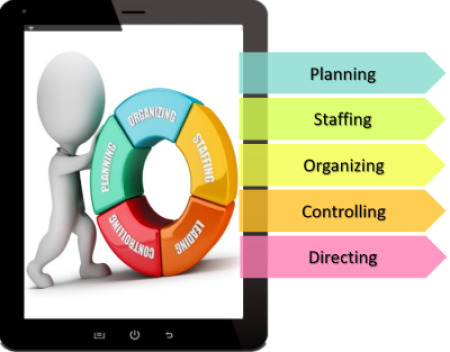#managementfunctions
Explore tagged Tumblr posts
Link
#communityhealthnursingstudents#leadershiproles#LeadershipStyles#managementfunctions#managementtheories#NursingCare#nursingresearchpaper#powerpointpresentation#PowerPointPresentation(PPT)#ResearchTopics#seminartopics
1 note
·
View note
Text
Title: The Five Pillars of Effective Management: Functions Made Easy

View On WordPress
0 notes
Text
The Importance of Regular Fleet Audits in Reducing Operational Costs
In the high-speed world of fleet management, operating expenses can get out of hand in no time if not properly monitored and controlled. Fuel costs, maintenance, regulatory infractions, and inefficiencies can greatly affect profitability. Perhaps the best method of keeping expenses under control is through routine fleet audits. Fleet audits offer important information that enables fleet management companies to maximize performance, improve safety, and eliminate unnecessary expenses.

What is a Fleet Audit?
A fleet audit is an in-depth review of a business's vehicles fleet management activities, such as vehicle utilization, maintenance schedules, fuel usage, driver performance, and regulatory compliance. Through the detection of inefficiencies and opportunities for improvement, fleet audits enable companies to optimize operations and make informed decisions based on data that result in cost savings.
How Fleet Audits Help Minimize Operational Costs
1. Detection of Fuel Inefficiencies
Fuel is among the largest operating costs of any fleet. A thorough audit can reveal excessive fuel usage resulting from factors such as inefficient routing, driver misbehavior, or idling of vehicles. Fixing these, companies can undertake fuel-saving interventions that result in significant cost savings.
2. Scheduling Maintenance Optimally
Routine audits ensure maintenance schedules are adhered to strictly, avoiding expensive breakdowns and surprise repairs. Preventive maintenance not only increases the lifespan of fleet vehicles but also reduces downtime, maintaining operations smoothly.
3. Driver Performance Improvement
Driver behavior has a significant influence on fuel economy, vehicle maintenance, and overall safety. Driver behaviors like aggressive braking, speeding, and idling are evaluated in fleet audits. With training programs and telematics solutions, businesses can promote safe driving, minimizing maintenance expenses and fuel consumption.
4. Regulatory Compliance
Non-conformity with industry regulations has the potential to lead to significant fines and legal problems. Ongoing fleet audits enable organizations to keep in line with safety norms, license essentials, and ecological norms. Such a proactive strategy minimizes the risks of penalties and ensures hassle-free operations.
5. Administrative Burden Reduction
Manual record-keeping and ineffective documentation can result in mistakes and higher administrative expenses. Fleet audits assist in streamlining record management by determining where automation and technology can enhance efficiency. Using a fleet management service can save time and lower labor expenses.
The Long-Term Benefits of Fleet Audits
Aside from short-term cost reduction, periodic fleet audits work towards long-term business viability. Businesses that regularly review and refine their vehicles fleet managementfunctions enjoy greater efficiency, better customer satisfaction, and a more robust bottom line. Fleet audit investment is not merely a cost-cutting measure—it's a profitability-maximizing and industry-leading effort.
Conclusion
Routine fleet auditing is an essential business strategy for companies seeking to lower operational expenses and increase overall efficiency. Through inefficiency identification, maintenance optimization, driver performance improvement, compliance verification, and the minimization of administrative burdens, fleet audits yield actionable information that translates into cost savings and operational excellence.
At Fleet Pro Audits, we provide specialized fleet management service reviews that identify hidden areas of cost savings for businesses. Get in touch with us today to arrange your fleet audit and take the initial step toward an optimized and more profitable fleet operation.
#fleetproaudits#automotive fleet management#fleet management#fleet management system#fleet management companies#fleet management in USA#vehicles fleet management
0 notes
Text
Controlling
One of the most important aspects of managing is controlling. Companies set standards, monitor progress and take corrective actions in order to control their performance. Indofood has also set their own standards, goals, and deadlines where employees are expected to follow according to the tasks they are assigned. To monitor their progress, Indofood set out a quality control department to ensure their processing, tasting, and packaging will result in a standardized output. They also measure their performance through feedback control where their actual performance can be measured to fit their initial plan. If defects are found, Indofood will immediately take corrective actions to reduce it. Skilled operators and supervisory employees help to invigilate the workers. Managers are the ones who has the power to then take corrective actions upon those faults.
One of the examples of controlling that Indofood regularly uses is quality control. For quality control, we use feedback control to correct or prevent performance deficiencies. Feedback control evaluates the company’s progress by comparing the output the company plans on producing to what is actually produced. If the actual performance is not in accordance with performance standard, our company will take a corrective action to fix it. Michael McGrath, James O’Connor, Sinead Cummins (1998, p2) state “However, we also aware that no system is able to entirely replace an experienced operator.” In addition, we develop appropriate decision support mechanisms to help both skilled operators and supervisory employees to effectively carry out their production/processing duties.
If something goes wrong in the production process, the manager will take corrective action by finding a better method for the production and working overtime.As one of the leading consumer branded products in Indonesia, we have production capacity of about 375,000 tons per year and our company continues to grow due to the high demand for our products.We are positive with the future of our company as our sales volume increases in all group divisions and we always create innovative products with high quality to keep pace with our customers and their changing nature.
0 notes
Text
Organizing
Organizing is one of the most important element to be a successful business.There are a lot of important things that Indofood use to organize their company.First,they set affordable price so that everybody in various economics levels to purchase the goods.Second,they try to more products besides Indomie.For example: Popmie,Indomilk, Indoeskrim and a lot more products.Third,they divide their divisions so that things are done more specialized and organize.They have division of packaging, division of seasoning and more.Fourth, leaders in PT Indofood set goals and deadlines, give directions, and assign tasks for the employee.Fifth, leaders in PT Indofood set goals and deadlines, give directions, and assign tasks for the employee.Seventh,they make sure that they produce high quality product.
These are the methods that Indofood use in general when organizing:
1) Set good price so that it won’t be to expensive and affordable which let people from various economics levels to purchase the goods. 2) Organize to produce more product besides indomie 3) Divided the division .(director of seasoning,director of packaging and more) 4) They decide what type of authority that they use. Indofood choose centralized authority so,the decision are made by upper manager. 5) Type of communication. Indofood choose vertical communication 6) leaders in PT Indofood set goals and deadlines, give directions, and assign tasks for the employee 7) make sure that they produce high quality product.
0 notes
Text
Planning
Managers need to plan in order to have a successful company. Planning is preparing a list of steps to achieve organisational goals. We also have to set vision and mission. Our vision is a total food solutions company, and our mission is to provide sustainable solutions for food needs, to continuously improve our workers and technologies productivity, to contribute to the welfare of the society, and to continuously improve stakeholders’ values.
To plan, we need to identify the SWOT analysis of our company. The strength of our company is it can cover almost all market segment from different age groups such as teenagers, adults or retirees. Another strength is it has a wide range of products that enables customers to choose. We also provide a strong seasoning for our products. Also, our company has a strong brand image, catchy and memorable jingles and slogan in the advertisement that was shown, affordable price which enables people from various economic level to purchase, and lastly convenient—easy to get, easy to prepare, and has lot of distinct flavours.
Despite all the strengths, our company has also weaknesses, which create some hesitation for some customers to purchase our products. One of the weakness is it contains MSG (MonoSodium Glutamate) , which is used to create strong taste. The second weakness is the use of preservatives in many of our products. Preservatives are necessary to maintain the freshness and prolong the shelf life of our products.
The opportunities that we have is expanding the market to the whole world. One of our best selling products, which is known worldwide, is Indomie. Indomie has been exported to many countries, such as Malaysia, East Timor, Australia, Saudi Arabia, Egypt, Netherland, Kenya, Hong-Kong, Japan, China, and even the United States of America. Another opportunity is that we can make healthy noodles.
Unfortunately, there are also threats that occur in our market which is innovation from other competitors that sells almost the same products and healthy life style issue that creates customer loss. Therefore, this is something we need to go further and find some solutions.
0 notes
Text
Leading
The two dimensions of leadership behaviour, Consideration and Initiating Structure, are implemented in PT Indofood. This means that leaders in PT Indofood set goals and deadlines, give directions, and assign tasks for the employees (initiating structure). However, when necessary, the leaders may switch the leadership behavior to consideration structure, which are being friendly, approachable, and supportive with their staff.
For leadership styles, leaders in Indofood use several different ones. The leaders adjust their styles according to the situation they are in. “In a daily basis, we usually apply the directive leadership style or sometimes known as autocratic style” (Lamidin, 2014). With this style, the leaders let their staff know exactly what is expected of them. Subordinates are given specific guidelines and orders, performance standards are set, and employees are expected to follow rules and regulations of the company. In some cases where employees need some motivation or when the company faces new employees, supportive leadership style is implemented. This leadership style means the leaders create a friendly and approachable atmosphere. The leaders are attentive to the welfare of their staff. They try to find ways to keep their staff satisfied and motivated.
In other situations, when our leaders are working with skilled workers, achievement oriented leadership style is implemented. In this style, the leaders set challenging goals and show confidence to their staff to meet their high expectations.
0 notes